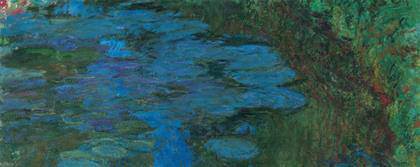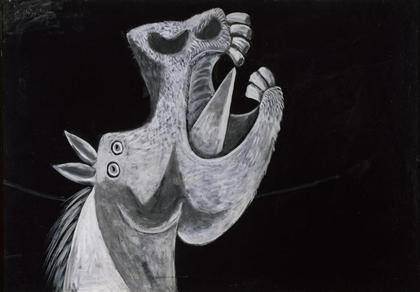
Claude Monet, Nymphéas, 1914-1917
© Fondation Beyeler, Riehen/Basel
Last Works. Manet to Kippenberger – Schirn Kunsthalle The exhibition is dedicated to outstanding works and groups of works that artists produced in the very last phase of their creative career and which, each in its very own way, mark the end of a life’s work.
Schirn Kunsthalle Frankfurt – February 28 to June 2, 2013.
Source: Schirn Kunsthalle Frankfurt
Meant to shed light on the issue of possible conclusions of an oeuvre, the show offers a compact selection of fourteen artistic positions from the late nineteenth century through to the present. Featuring about ninety works in poetic constellations, it spans from artists such as Édouard Manet, Claude Monet, Alexej von Jawlensky, Henri Matisse, Francis Picabia, Ad Reinhardt, and Georgia O’Keeffe to Giorgio de Chirico, Bas Jan Ader, Walker Evans, Willem de Kooning, Andy Warhol, Stan Brakhage, and Martin Kippenberger. Whether famous works from the end of an artist’s life or late achievements that are nearly unknown: each of the artists selected produced a group of works whose “final” character offers a special, sometimes innovative view on the respective oeuvre and raises a variety of questions concerning the imminent end of artistic activity.
The presentation at the Schirn is not chronologically structured, but, spread across seven rooms, rather aimed at creating fascinating confrontations with two artists each entering into a mostly unexpected dialogue with each other. Claude Monet’s famous water lilies of the late 1910s, for example, find themselves in the company of the flower still lifes with which Édouard Manet, in 1882/83, gave expression to his undiminished positive attitude toward life only weeks before his early death. Willem de Kooning’s abstract late work is related to the cutouts of the Jazz portfolio that ushered in Henri Matisse’s famous last creative phase, the chapter of his “papiers découpés,” at a time when the artist was almost eighty.
All in all, the presented works reveal quite different facets of the imminent end of artistic activity: newly obtained freedom and self-confidence, increased productivity, processes of reorientation resulting from physical restrictions, reflections on one’s beginnings, or stoical insistence on the path chosen come into play as do aspects of disdain for one’s fate, chance, and repetition. Finally, the presentation of Ad Reinhardt’s black square pictures dating from 1960 to 1966 provides an opportunity to explore the aesthetic engagement with the “last work” and the end of painting.
Follow us on:


